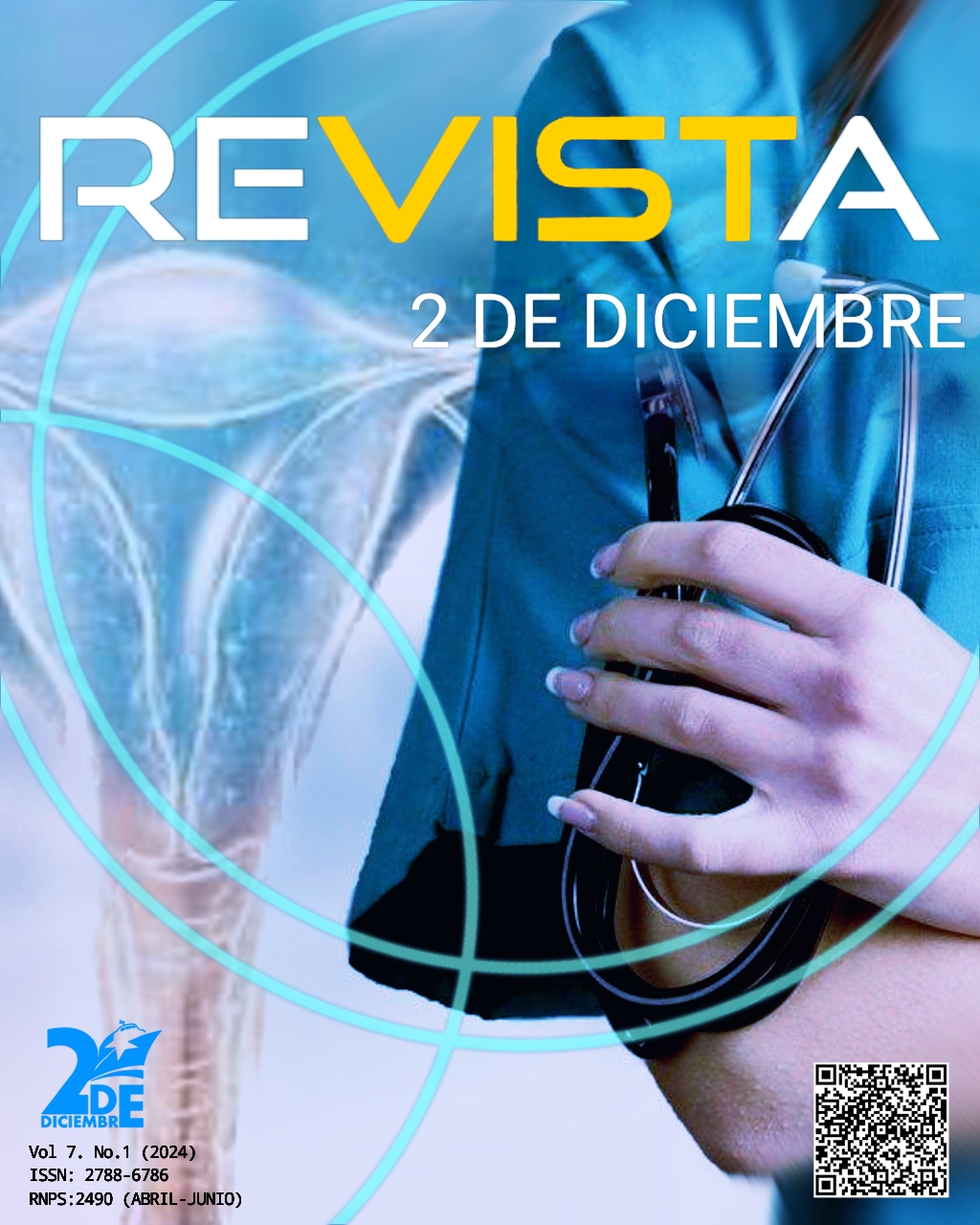Sectional Axillary Artery Reparation Through the Use of An Autologous Graft from the Mayor Saphenous Vein
Keywords:
, vascular trauma, axillary artery, graft, saphenous vein, fractureAbstract
A traumatic humeral fracture is a clinic entity that presents with relative frequency in emergency services. It is estimated that its incidence is between 4% to 5% of all fractures, 45% of surgical neck of the humerus and additionally 85% of these are non displaced. Complications that may occur during surgical correction of a humeral fracture include vascular and neurological lesions, with vascular lesions being the most common (3%). The close proximity of the axillary vasculature to the head of the humerus increased the risk of vascular lesion during the fracture or anterior luxation of the shoulder.
This case report presents a 57 year old female patient, with a medical history of traumatic injury to the humerus, 15 days prior to the first consultation. During which she presents with pain, limited functional mobility, and loss of range of movement.
An anterior-posterior x-ray is taken of the shoulder, where a complete fracture of the surgical neck of the humerus is visualized. The patient is then taken to a shoulder arthroplasty and at the moment of closing the tuberosities over the prosthesis, it presents with profuse bleeding due to an intraoperative complication that generates a 1cm marginal tear of the axillary artery. This situation required management by vascular surgery who decides to implement the placement of an autologous graft of the major saphenous vein.
Downloads
References
1. Gill H, Jenkins W, Edu S, Bekker W, Nicol AJ, Navsaria PH. Civilian penetrating axillary artery injuries. World J Surg [Internet]. 2011;35(5):962–6. Disponible en: http://dx.doi.org/10.1007/s00268-011-1008-8
2. McCready RA, Procter CD, Hyde GL. Subclavian-axillary vascular trauma. J Vasc Surg [Internet]. 1986 [citado el 13 de marzo de 2022];3(1):24–31. Disponible en: https://www.jvascsurg.org/article/0741-5214(86)90065-0/fulltext
3. Medigraphic.com. [citado el 13 de marzo de 2022]. Disponible en: https://www.medigraphic.com/pdfs/trauma/tm-2003/tm032d.pdf
4. Cristián Salas D. Trauma vascular, visión del cirujano vascular. Rev médica Clín Las Condes [Internet]. 2011;22(5):686–95. Disponible en: https://www.sciencedirect.com/science/article/pii/S0716864011704813
5. Xenos ES, Freeman M, Stevens S, Cassada D, Pacanowski J, Goldman M. Covered stents for injuries of subclavian and axillary arteries. J Vasc Surg [Internet]. 2003;38(3):451–4. Disponible en: http://www.jvascsurg.org/article/S0741-5214(03)00553-6/pdf
6. Castelli P, Caronno R, Piffaretti G, Tozzi M, Lagan? D, Carrafiello G, et al. Endovascular repair of traumatic injuries of the subclavian and axillary arteries. Injury [Internet]. 2005 [citado el 13 de marzo de 2022];36(6):778–82. Disponible en: https://www.injuryjournal.com/article/S0020-1383(05)00004-5/fulltext
7. Danetz JS, Cassano AD, Stoner MC, Ivatury RR, Levy MM. Feasibility of endovascular repair in penetrating axillosubclavian injuries: a retrospective review. J Vasc Surg [Internet]. 2005 [citado el 13 de marzo de 2022];41(2):246–54. Disponible en: https://www.jvascsurg.org/article/S0741-5214(04)01639-8/fulltext
8. Fox C, Gillespie D, O'Donnel S, Rasmussen T, Goff J, Johnson C, et al. Manejo contemporáneo del trauma vascular en tiempos de guerra. Revista de Cirugía Vascular. 2005;41:638-44. Recuperado el 22 de abril de 2017, de http://wwwjvascsurg.org/article/S0741-5214(05)00032-7/fulltext
9. Egol KA, Koval KJ, Zuckerman JD. Handbook of fractures. 5 th ed. Philadelphia: Wolters Kluwer; 2015
10. Komori, k; Okadome, K; Sugimachi, K; Factor relajante de origen endotelian e injertos venosos- Br. j , Surg (Ed. Esp) 1991; 6: 553-556.
11. Salas C. (2011). Trauma Vascular, Visión del Cirujano Vascular. Revista Médica Clínica Las Condes. 2011;22:686-95. Recuperado el 20 de abril de 2017,
de http://www.sciencedirect.com/science/
article/pii/S0716864011704813
12. Ivantury R, Anand R, Ordonez C. Penetrating Extremity Trauma, World Journal of Surgery. 2015;39:1389-96. Recuperado el 18 de mayo de 2017, de http://sci-hub.cc/10.1007/s00268-014- 2865-8.
13. Gallucci GL, Maximiliano R., Gallucci J., De Carli P., Maignon G. Comienzo tardío de la trombosis de la arteria axilar después de una fractura de cuello humeral sin desplazamiento: informe de un caso. J Hombro Codo Cirug. 2007; 16 :E7–E8. [ PubMed ] [ Google Académico ]
Published
How to Cite
Issue
Section
License
Authors who have publications with this journal agree to the following terms: authors retain their copyright and grant the journal the right of first publication of their work, which is simultaneously subject to the Creative Commons Attribution-NonCommercial 4.0 International License that allows third parties to share the work as long as the author and first publication in this journal are indicated, for non-commercial use. Authors may adopt other non-exclusive license agreements for distribution of the published version of the work (e.g., depositing it in an institutional telematic archive or publishing it in a monographic volume) as long as the initial publication in this journal is indicated. Authors are allowed and encouraged to disseminate their work via the Internet (e.g., in institutional telematic archives, in their web page or in Pre-print servers) before and during the submission process, which can lead to interesting exchanges and increase citations of the published work. (See The Open Access Effect).







